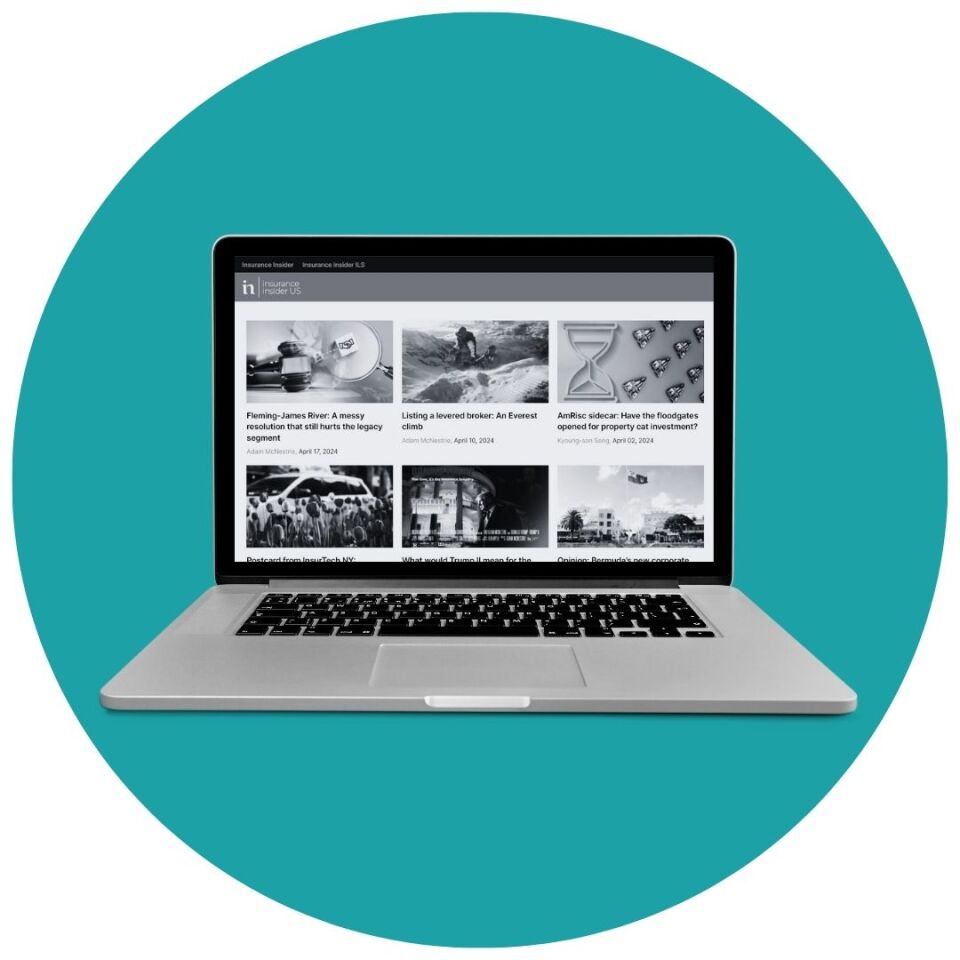Header

2025 Insurance Industry Report: In-Depth Analysis and Trends
Insurance Industry Overview
The US P&C insurance market is enjoying a period of relative stability, with underwriting profit generally holding up despite heavy catastrophe losses. The picture is, of course, mixed by company and by line. What’s more, shadows on the horizon include geopolitical and economic uncertainty, social inflation, casualty reserving, and climate change.
The Future of Insurance
Effective horizon scanning has never been more important as emerging risks proliferate and a period of slow global economic growth segues into economic and financial volatility. Here are some issues to watch that will inform insurers’ strategy and shine a light on the question, how much do insurance companies make?
Social Inflation
Proposed legislation across the US to tamp down on litigation finance may just mitigate the damage to insurers’ liability loss ratios from ever-increasing jury awards.
However, reform will take time and elevated compensation claims remain a pressing concern for the industry, with executives including Chubb CEO Evan Greenberg regularly speaking out about the issue. Swiss Re recently put the average annual social inflation rate at 5.4% between 2017 and 2022, compared with economic inflation at 3.7%.
Social inflation has also created a casualty claims handling problem for the industry, compounded by years of neglect and underinvestment. Subscribers to Insurance Insider US can click here for our full report.
Casualty Reserving
Despite some notable reserve-strengthening actions, the industry in general is still struggling to grasp the reserving and loss-cost issue. Workers’ compensation reserve releases in recent years have masked levels adverse development but this favorable development is now dwindling. In a deep-dive report, Insurance Insider US looked at commercial reserves, including a comparison of initial commercial loss picks with ultimate losses. We found more warning signals flashing red across the industry.
Elevated Natural Catastrophe Losses
2025 looks set to be another year of elevated natural catastrophe losses, with Colorado State University predicting an above-normal North Atlantic hurricane season. Munich Re calculated that 2024 insured natural catastrophe losses rose to $140bn, the third-highest level on record, led by Hurricanes Helene and Milton. At the same time, temperatures rose to all-time highs. Rate growth and, for reinsurers, higher retentions are helping the industry mitigate the risk. So too are innovations within the Insurtech market. AI and machine learning tools are turbocharging modeling by using an ever wider set of higher resolution data sources, all made possible by a step change in the computing power at our disposal. However, the exact location of a storm’s landfall, and therefore the extent of property damage, remains extremely difficult to predict until shortly before it strikes.
California Wildfires
The California wildfires, which are predicted to generate an insured loss of around $40bn, are a stark example of how so-called secondary perils are causing plus-size pain. The loss is complex and difficult to discern by market share analysis, given an uneven distribution of high-net-worth exposure. Chubb, for example, estimated $1.5bn of losses despite not being in the Top 10 among homeowners’ insurers in the state. What’s more, uncertainty about the contents of the homes destroyed mean that what looked like a $5mn loss could quickly become far higher. The fires compounded an insurance capacity crisis in California, which Insurance Commissioner Ricardo Lara is trying to mitigate with his Sustainable Insurance Strategy.
Geopolitics and economics
The spectre of tariffs has challenged consensus expectations for economic growth, inflation, and interest rates. The uncertainty is just the latest worry in a so-called geopolitical “permacrisis.” For insurers, geopolitical events, such as supply-chain disruption because of politics, pandemic or war, impact multiple lines of business. Slowing economies also crimp demand for certain covers, while elevated interest rates mean higher financing costs for insurers and mark-to-market losses in bond portfolios. Our initial analysis suggests the impact of any tariffs on insurers could be manageable. Insurance Insider US will continue to bring you the latest expert insight on this fast-changing situation, so subscribe today for full access.

ESG push and pull
P&C carriers are being torn apart on ESG. Climate change, and the associated transition risk, is one of the insurance industry’s biggest worries. Many customers, employees, and investors also want to see action on climate and other sustainability and governance-related issues. However, the anti-ESG movement in the US and early actions by President Trump, such as his curtailment of federal funding for diversity, equity, and inclusion initiatives, represent a change in the mood music. The SEC appears to have halted mandatory climate risk reporting, though recently it unexpectedly refused to exclude shareholder proposals at Chubb and at Travelers from climate activists.
Rate outlook
In aggregate, recent figures from the Council of Insurance Agents and Brokers and from Willis Towers Watson show commercial lines rate growth is gently moderating, with significant differences between lines. Our qualitative analysis of recent C-suite commentary points to a continued loss of momentum within commercial property. By contrast, social inflation is supporting casualty rates.
It remains too early to assess the primary market impact of the California wildfires, though reinsurers expect these to support property rates at upcoming renewals. In casualty, WR Berkley CEO Rob Berkley recently noted that casualty reinsurance rates remained concerning, despite growth in primary casualty rates. In personal lines, homeowners’ and auto policyholders face further rate rises. Insurers’ remedial rate action to protect loss ratios recently informed an AM Best outlook upgrade for personal lines from to stable from negative, driven by an improving picture for personal auto.
Insurance Insider US is the P&C industry's go-to resource for trusted insights on industry growth, timely digests on financial performance, and agenda-setting trend analysis.
Subscribe today and fuel a smarter strategy with our actionable insights.
Top commercial insurance companies
In the P&C insurance sector size isn’t everything, but it matters. Our list of the biggest insurance companies, ranked by premiums,. shows State Farm leading the way with $109bn direct premiums written (DPW) in 2024, a rise of 16% on a year earlier, followed by Progressive, at $75.9bn ($62.7bn) and Berkshire Hathaway at $63.3bn ($58.7bn.)
This year, Switzerland-based Zurich burst into the Top Ten in our list of insurance companies, with $18.6bn in direct written premiums. It displaced Nationwide, which had $17.7bn of DPW. Click here for the full rankings.
Of course, the best commercial insurance companies aren’t necessarily the biggest. Recent performance rankings by S&P Global Market Intelligence put Kinsale as the No. 1 US P&C insurer for the second consecutive year, as measured by growth in premiums, assets and policyholders’ surplus. The US subsidiaries of Arch Capital and FM Global ranked second and third, followed by Aspen and Assurant. Berkshire Hathaway, which came in at No. 10 for S&P, was the only carrier present in both league tables.

Insurance Industry Statistics
Insurance Insider US is a trusted source of timely research and data. Through proprietary analysis and by crunching insurance industry statistics, we join the dots to guide your strategic decisions. At company and industry-level, we shine a light on the question, how much do insurance companies make, and the factors behind their future profitability with regularly updated earnings intelligence. Read on for highlights of select need-to-read deep dives, from P&C experts for P&C experts.
Profit drivers
Our analysis of statutory data for 2024 shows personal auto and homeowners’ drove the industry to an overall underwriting profit. As we entered 2025, personal lines had the lowest median combined ratio of 89.2%, a dramatic turnaround from the year earlier. We found that commercial insurance pricing has exceeded loss costs in most lines of business over the past five years, leading to a fairly consistent improvement in underlying loss ratios. As a cohort, commercial insurers are still achieving elevated returns on equity, while maintaining discipline on rates. However liability, product liability and medical malpractice are trouble spots and recent Insurance Insider US analysis shows underwriting profit for such casualty-exposed insurers is showing signs of struggle. Looking ahead for the industry as a whole, the Swiss Re Institute’s January report on the US P&C market predicted an unchanged combined ratio of 98.5% and an aggregate return on equity stabilizing at 10% in 2025. The reinsurer forecast US P&C industry DPW growth of 5%, around half the rate of 2024.
Reserving
With persistent worries about casualty reserving, our analysis of statutory Schedule P reserving data laid bare the extent to which the insurance industry is balancing reserve development between various lines and accident years. Overall, net favorable development improved to $2.6bn in 2024, from $1.5bn. Our analysis cemented our conviction that carriers are shying away from taking the reserve-strengthening medicine they need to remain in good health. The full report is available to subscribers by clicking here.
Insurance stocks
President Trump’s initial tariffs regime roiled financial markets and introduced a new dynamic to the question of whether P&C stocks can continue to outperform the S&P 500 in 2025. Around the turn of the year, we had predicted that continued outperformance was unlikely, after 29 of the 44 P&C stocks we follow outstripped the S&P 500’s 23.3% growth last year. However, our “Liberation Day” analysis demonstrated the relative resilience of our sector, with demand inelasticity across many lines its key strength. Click here for further analysis about how P&C stocks are faring against the benchmark as the situation evolves, and which subsectors are holding up best. Our regularly updated earnings analysis will help you make sense of insurers’ stock performance.
Workers’ Comp
As we’ve discussed, workers’ comp reserve releases have been flattering the net reserve development picture and allowing carriers to avoid strengthening long-tail reserves. However, our research into this line of business points to a deterioration of workers’ comp reserve releases. We noted that workers’ comp net premiums - at $48bn – represent less than 6% of overall premiums written in the US P&C insurance industry. In addition, wage and medical cost inflation is rising above overall inflation, while workers’ comp rates have declined for a decade, except for a short interlude in 2020/1.
Excess & Surplus
The Excess & Surplus (E&S) market has been growing exponentially in recent years. Our analysis of 2024 insurance industry data shows the market wrote more than $130bn direct premiums. However, growth is slowing, and the level of E&S underwriting outperformance above the broader industry is shrinking. We analysed the market by state and by carrier .
Brokers
Brokers have enjoyed many quarters of solid performance. They have persistently defied the gloomiest predictions about revenue and margins based on expectations that organic growth would slow to levels just about GDP growth. However, organic growth has decelerated from 2022/23, with the Big Four intermediaries reporting fourth-quarter expansion of between 5% and 7%. With numerous uncertainties to navigate we expect intermediaries to consider M&A, particularly in the US middle market, and ways to create efficiencies as they buttress themselves for a lower-growth environment.
Reinsurance
Reinsurers led the P&C sector out of the earnings doldrums earlier in the decade and are likely to continue to achieve strong profitability. Broker Gallagher Re predicts P&C market-leading returns on equity of around 18% to 19% in aggregate in 2025, assuming a normal level of catastrophe events and average reserve releases. In terms of rate, California wildfires are expected to play a decisive role in how much reinsurance capacity is available for the Florida renewals on 1 June and stem property catastrophe rate declines we saw on 1 January. Sources predict that reinsurers will derisk from California and therefore turn to Florida to deploy capacity. Our Florida renewals preview examines the dynamics.

Insurance trends
Insurers are taking various approaches to address the challenges and seize the opportunities of the evolving risk landscape. Read on for five trends to watch.
Technological investment and transformation
Insurers have been investing heavily in modernizing legacy systems in recent years, tapping InsurTech solutions to generate efficiencies, leverage data, gain competitive advantage and better respond to customer demand. Digital trading platforms, migration to the cloud, and straight-through processing to automate data exchange are among their strategies. AI is helping P&C companies leverage data and advanced analytics. It is expected to increasingly inform activities including pricing, risk selection, fraud detection, claims payments and reserving, Insurers are at an early stage in harnessing the vast power of gen AI, but it looks set to be a game changer. Click here for an on-demand webinar on how carriers are using gen AI for risk selection.
M&A
Technological know-how, access to new markets and product lines, and capital and operational efficiencies are among the prizes of successful M&A for buyers. Sellers gain an exit opportunity, and cash to return to investors or deploy elsewhere. However, confidence influences deal flow and in 2024, a year of worsening geopolitical unrest, this has been low.
Clyde & Co. found insurance M&A globally dropped to a 15-year low of 204 completed deals. This included 69 in the US, where deal flow was powered by a small number of high value transactions. Notable 2024 deals include Aon’s purchase of NFP for $13bn in April, Marsh McLennan’s November closure of its acquisition of McGriff Insurance Services for $7.8bn and the $5.1bn take-private of Enstar by Sixth Street, which shareholders approved in November.
Clyde & Co. predicts an M&A acceleration this year, with drivers including broker consolidation, MGA acquisitions and foreign investment in the E&S sector.
Our analysis also points to an uptick in both insurer IPO and deal activity and continued broker M&A. From sales processes to deal values, Insurance Insider US is a reliable source of exclusive intelligence on M&A. We collate the information you need in our M&A Deal Tracker, the engine of our regular M&A Deal Updates. Full access to the latest M&A news and analysis from our trusted team is available to subscribers.
Personalization
The rise of vehicle telematics and smart-home technology are among the innovations increasing the delivery of more personalized solutions in personal lines insurance.
Usage-based insurance (UBI) models are among the well-established insurtech industry trends in the US auto segment, facilitated by data from cellular, GPS, and other technology to measure behaviors including miles driven, time of day and driving habits. UBI may include “on demand” covers allowing policyholders to activate insurance when it’s needed. Gen AI is seen as a transformative tool in the drive for greater personalization. Its use cases include personalized marketing campaigns and tailored communication throughout the product lifecycle, with expected benefits including improved customer retention.
IoT in Industrial Settings
As with smart devices in personal lines, data from Internet of Things technology in commercial and industrial settings offer the promise of real-time risk management and even dynamic pricing. These devices amass huge amounts of data, including locational, environmental, biometric and physiological insights, and can help preempt incidents such as machinery breakdown, fire, flood, theft and personal injury. They can provide vital threat intelligence to P&C, though they also increase the surface for cyberattacks capable of damaging infrastructure. Insurers are at an early stage of effectively integrating IoT data but with the growth of the “smart factory” they will become an increasingly important tool. In coming years IoT is expected to help transform the role of insurers from reactive claims payers to proactive risk-management partners.
Embedded insurance
Embedded insurance, which integrates insurance into non-insurance platforms, is expanding beyond travel and appliances. Though convenient for consumers, it increases the risk of disintermediation for P&C companies unable to connect with the platforms used. By contrast for those with the technology to tap into the points of sale, it presents an exciting opportunity. Embedded insurance is expected to become increasingly prevalent in the auto sector with the growth of autonomous and electric vehicles, as well as in homeowners’, where it’s already available via real estate sites such as Zillow and Redfin. Insurers should brace for regulatory scrutiny around pricing and transparency, however.
Last updated: Apr 2025
Read more of our research

In the M&A Deal Tracker, you can find all of the key data points on every P&C commercial lines business in our coverage universe which is currently on the market — as well as transactions in the sector which have recently completed.

Subscribe to Insurance Insider US today and harness the insights needed to drive your business forward.
You'll get:
- Breaking news alerts and digests
- In-depth analysis and opinion
- Research you won't find anywhere else
- Tools mapping M&A and talent data
- Subscriber discounts to events
- Access to an esteemed reporting team



